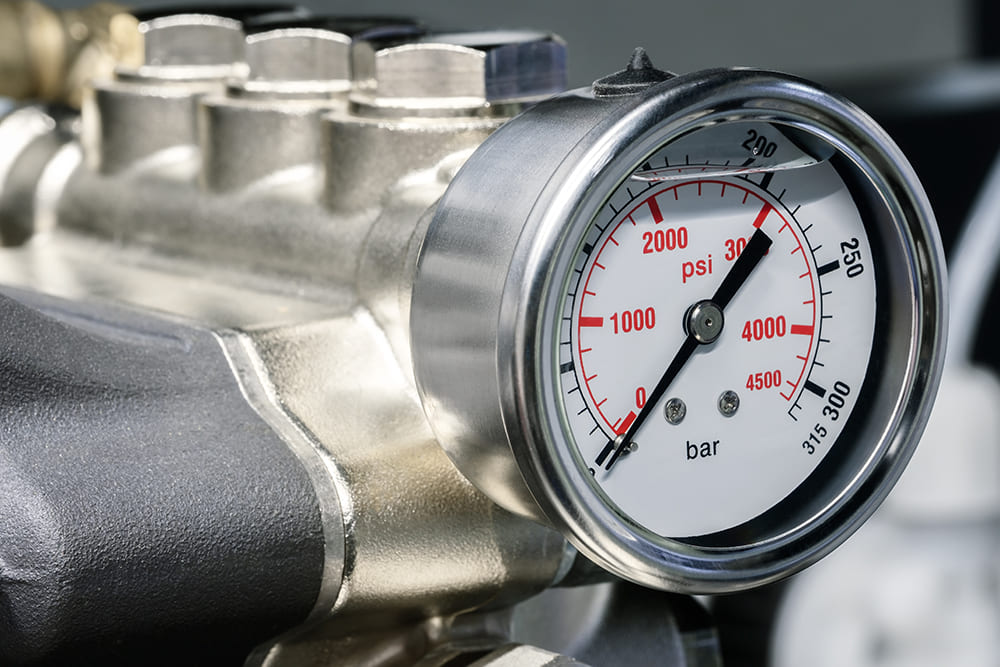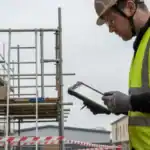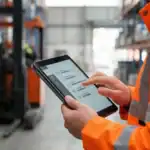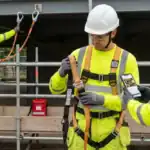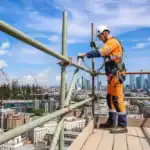
Do you have to wear a harness in a MEWP? Like most questions in health and safety, there’s not a standard answer. But there is always a correct one.
If you’re planning work at height using a mobile elevated work platform (MEWP), our guide explains how to decide when fall arrest equipment is necessary and what type you should use.
Why are Safety Harnesses Sometimes Necessary?
Falls from height are the deadliest accident in the powered access industry, according to the International Powered Access Federation (IPAF).
A recent IPAF report recorded 27 fatalities and 13 major injuries caused by operators falling from an elevated work platform.
IPAF’s statistics paint a grim picture. Without proper precautions, work from an elevated platform can be deadly.
Working at Height Regulations
UK health and safety is risk-based, meaning employers must assess risks and plan how to eliminate or control them before work starts.
So, if you’re in control of work, including work at height, you have the final responsibility to make it safe. You determine safe systems, necessary equipment and worker competence.
This shouldn’t be new information. Under the Work at Height Regulations 2005, you can only use a mobile elevated work platform if you’ve already completed a risk assessment for the planned activity and confirmed a MEWP is the safest option for workers.
It’s a similar process for determining whether safety harnesses are needed. You review the risks specific to the planned work and judge whether a safety harness is necessary or not to protect the worker.
So, only a competent person (armed with a compliant risk assessment) can conclusively answer the question, “Do you have to wear a harness in a MEWP?”
The first point to consider is what type of MEWP is being used.
Harness Inspection Training
Our Harness and Lanyard Inspection course teaches users to inspect fall arrest and restraint harnesses and lanyards. It explains equipment components and walks users through inspection procedures for harnesses and lanyards, with clear examples of failures.
Which MEWPs Need Workers to Wear a Safety Harness?
One way the IPAF organise fall data is by equipment type. So, IPAF’s figures reveal which category of MEWPs are the most dangerous to work from.
Most falls involved a 1b (static boom) machine, with incidents happening more often in the construction sector.
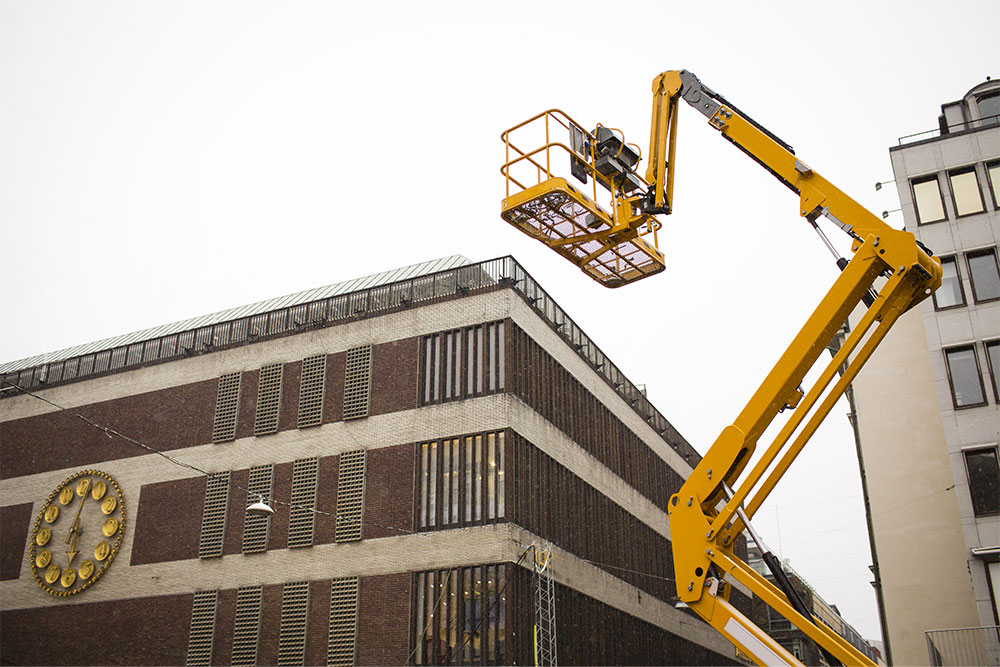
Static boom machines have consistently been the most dangerous type of machine, and it’s easy to see why. Booms are generally used at taller heights and outdoors, which makes them harder to stabilise and more vulnerable to high winds.
An extended boom also positions the worker far from the machine’s centre of gravity. As a result, any impact or unplanned movement of the machine’s superstructure will have an outsized effect on the basket, potentially launching the worker from the platform. This phenomenon is known as the ‘catapult effect,’ and it’s more severe the further the platform is extended.
Because of these risks, the IPAF always recommends wearing a full-body harness with a short lanyard restraint when working from a boom.
Are There Any Exceptions to IPAF’s Guidance?
Yes. When a platform is extended over water, it may be safer to provide workers with a life jacket than a safety harness.
You must consider the risks. Is drowning or falling a greater risk to the worker? Provide them with the equipment that’s most needed.
What About Other Types of MEWP?
The IPAF doesn’t recommend wearing harnesses at height with MEWPs of all types.
Safety harnesses aren’t advised for work in static (1a) and mobile (3a) verticals, such as scissor lifts.
While these platforms aren’t without risk, they generally have a lower centre of gravity and wider work platforms compared with boom types. These factors mean that they’re generally more stable and, should workers lose their balance, there’s more platform to catch them.
However, this isn’t a rule. Remember, it ultimately depends on your risk assessment.
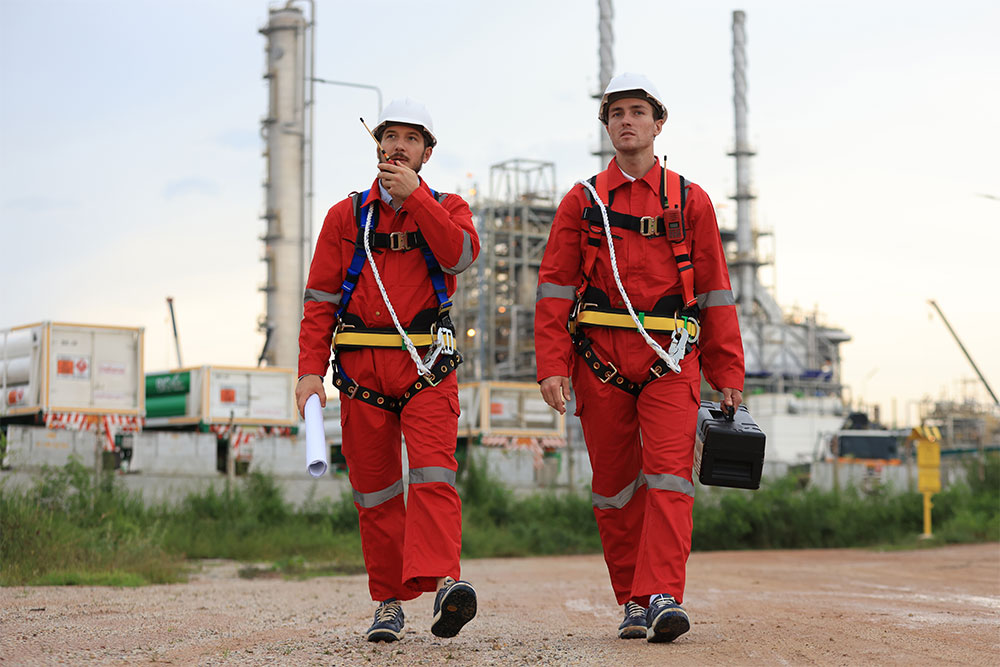
What Does the Health and Safety Executive Say?
Health and Safety Executive (HSE) guidance is similar to IPAF’s but does not refer to specific types of machines.
Instead, the HSE advise you to refer to your risk assessment. If there’s a danger of people falling from the work platform after other controls (such as guardrails) have been implemented, a safety harness should be provided.
Since this requirement is based on risk, not machine type, it applies to all platform types.
And it is a requirement. You have a legal duty to risk assess all work at height and implement control measures based on the findings. Failing to implement a necessary control measure (such as using harnesses to work at height) is equivalent to breaking the law. You could be fined or face enforcement action if an accident happens that could have been prevented with a harness.
What Safety Harness Should You Use in a MEWP?
You should provide workers with a full-body safety harness with a short work restraint lanyard. The lanyard should be as short as possible while still allowing the wearer freedom to work. It should also be anchored to a suitable point in the basket.
Safety Harness Regulations and Requirements
Safety harnesses are personal protective equipment (PPE), so they’re subject to the Personal Protective Equipment at Work Regulations 1992. Under these regulations, you must provide PPE suitable for the work and worker. The worker must also be fully trained in its proper use.
There’s also a crossover with the Provision and Use of Work Equipment 1998 (PUWER) and potentially the Lifting Operations and Lifting Equipment Regulations 1998 (LOLER).
A safety harness and lanyard used for fall restraint are work equipment, so under PUWER, they must be regularly inspected and confirmed to be safe. Any equipment that fails an inspection cannot be used until it’s been repaired and reinspected.
The manufacturer should be able to advise when these inspections should happen, with adjustments based on your own equipment risk assessment.
In rare cases when a safety harness is used to lift a person, not as fall restraint equipment, LOLER applies. However, the requirements are essentially the same as PUWER: regularly inspect the equipment to confirm it’s in safe working order and perform maintenance as required.
Safety Harness Inspection Training
Do you have to wear a safety harness in a MEWP? Probably. Review your risk assessment to know for certain. One thing that is certain is the need to regularly inspect fall arrest equipment and check it before each use.
Our online Safety Harness Inspection Course provides a thorough understanding of how to complete safety harness and fall arrest and restraint lanyard inspections. It covers why inspections are necessary, details the components of harnesses and lanyards and explains their pass/fail criteria.
The course also includes two free e-Checklists, which guide users step-by-step through the inspection process and ensure all points are recorded to demonstrate compliance.
Investing in this training not only helps you meet health and safety regulations but also gives your workers confidence that their equipment will protect them.




